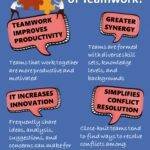
Conversation Cafe invites people to listen to one another’s thoughts and reflect together on a shared challenge.
The Liberating Structure “Conversation Café” is designed to encourage people to listen and understand each other’s perspectives on a profound, shared challenge instead.
The format of the Conversation Café helps people have calm and profound conversations in which there is less debating and arguing, and more listening. You can include and engage any number of people in making sense of confusing or shocking events and laying the ground for new strategies to emerge.
Sitting in a circle with a simple set of agreements and a talking object, small groups will engage in rounds of dialogue with little or no unproductive conflict. As the meaning of their challenge pops into focus, a consensual hunch is formed that will release their capacity for new action.
Four Structural Elements
1. Structuring Invitation
- Invite all the participants to gather in small groups to listen to one another’s thoughts and reflect together on a shared challenge
2. How Space Is Arranged and Materials Needed
- Unlimited number of 5 to 7 chairs around small tables
- Talking object (e.g., talking stick, stone, or art object)
- Markers and one or two pieces of flip-chart paper per table optional
3. How Participation Is Distributed
- Everyone is included
- Everyone has an equal opportunity to contribute
- Mixed, diverse groups of 5–7 participants
4. Sequence of Steps and Time Allocation
- State the theme of the conversation, usually in the form of a question
- Explain there will be four rounds of conversation at every table, two first rounds using a talking object, the third one as open conversation, and a final round with the talking object. Give the duration of each round.
- Distribute the talking objects
- Read the six Conversation Café agreements. See text in Collateral Material below.
- Ask for someone at each table to volunteer as the host. The host is a full participant whose role is to gently intervene only when a participant visibly fails to observe one of the six agreements, most frequently talking on and on
- First round with the talking object: each person shares what he or she is thinking, feeling, or doing about the theme or topic. 1 min. per person
- Second round with the talking object: each person shares thoughts and feelings after having listened to everybody at the table. 1 min. per person
- Third round: open conversation (option to use talking object). 20–40 min.
- Fourth round with the talking object: each member shares “takeaways.” 5–10 min.
Collateral Material

Purposes and Objectives
- Make sense of a complex, difficult, or painful situation and lay the ground for being able to move on
- Generate new ideas and momentum for innovation
- Build shared understanding of how people develop different perspectives and ideas
- Avoid arguments based on lack of understanding
- Build trust and reduce fear with an opportunity for catharsis
- Help participants appreciate that conversation involves talking and listening
Tips
- Use Wicked Questions to create input for the Conversation Cafe. Wicked Questions are about articulating the paradoxical challenges a group must confront to succeed.
- Try What, So What, Now What for debriefing the Conversation Cafe. What have you seen, heard, or observed that stood out? Why is that important? What patterns or conclusions are emerging? Now what? What actions make sense?
- Close the Conversation Cafe by defining 15% solutions. For example: What is your personal 15% Solution for letting go of the ineffective behavior? Something you do not need any additional resources, permission, or authority to do right now?
- After Conversation Cafe, encourage giving & getting help with Troika Consulting. This gives every participant the opportunity to ask consult for a challenge that emerged during the Conversation Cafe.
- Always use the talking object: they make the difference
- Have the host or participants reread the six agreements before starting the first round
- Do not assign tasks: there should be no intention that the dialogue will directly lead to action
- Encourage people to speak their mind
- Encourage quiet people to talk
- Select talking objects that may have symbolic meaning for participants
- Encourage participants to draw or record insights on the flip-chart “tablecloth”
Examples
- For exploring a new topic or trend that is not well understood
- For handling a topic where there will be strong feelings expressed
- For reflecting after a major change: What does it mean? What assumptions can we make? What conclusions make sense? What can we now believe?


